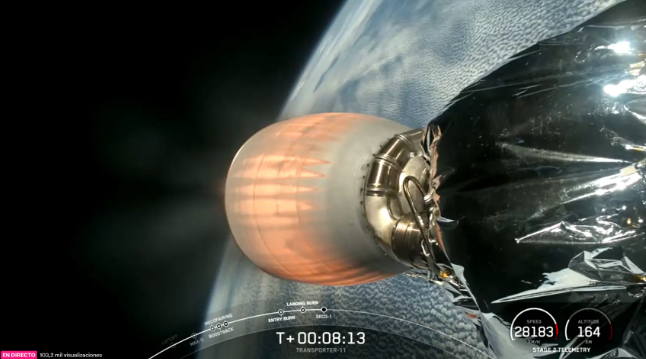AVS launches its first LUR-1 satellite mission into space

The Basque company AVS is launching the first Basque satellite into space, manufactured at its headquarters on the Vitoria-Gasteiz Campus of the Basque Country Technology Park, its first satellite, LUR-1, which will mark a before and after in the European aerospace industry by incorporating advanced technologies for sustainability in space.
The launch is scheduled to take place from the US Space Force Base Vandenberg in California, aboard SpaceX’s Falcon 9 rocket.
LUR-1, designed and developed at the AVS facilities on the Vitoria-Gasteiz Campus, is a 57-kilogram microsatellite equipped with state-of-the-art technology. This project, which has required an investment of eight million euros and three years of intense scientific and technological work, places the Basque Country at the forefront of the space industry. It also consolidates AVS as a benchmark in the design and development of complete satellite missions, from their conception to the control and analysis of data from Earth.
The satellite, which will orbit at an altitude of 515 kilometres above the Earth, is equipped with multi-band antennas (UHF, S and X), a deployable arm for solar panels and a seven-band multispectral camera providing high-definition images with a resolution of 1.5 metres per pixel. Among its innovations is a quantum communications experiment, developed entirely by AVS.
The main objective of LUR-1 will be to capture high-resolution images, initially focused on the analysis of the coastline and pest control in the Basque Country, although it will also provide services to institutions and research centres all over the world. This satellite, which will have a useful life of five years, will subsequently be captured and de-orbited in a controlled manner, thus avoiding contributing to the growing problem of space debris.
A key aspect of LUR-1 is its contribution to space sustainability. The satellite has an integrated MICE device, developed by AVS for the European Space Agency (ESA) as part of the Zero Debris 2030 programme. This device will be crucial to ensure the controlled disposal of satellites at the end of their useful life, making LUR-1 the first European satellite to orbit with this advanced technology.
The launch of LUR-1 coincides with the 18th anniversary of AVS, a company that started in 2006 and has subsidiaries in the UK, France and the US. With more than 200 employees, AVS has established itself as a major player in the space sector, participating in large-scale projects promoted by NASA and ESA.
This satellite represents a qualitative leap for AVS, which has gone from being a supplier of critical components to leading complete satellite missions, reaffirming its commitment to sustainability and its ability to innovate in the dynamic New Space sector.




